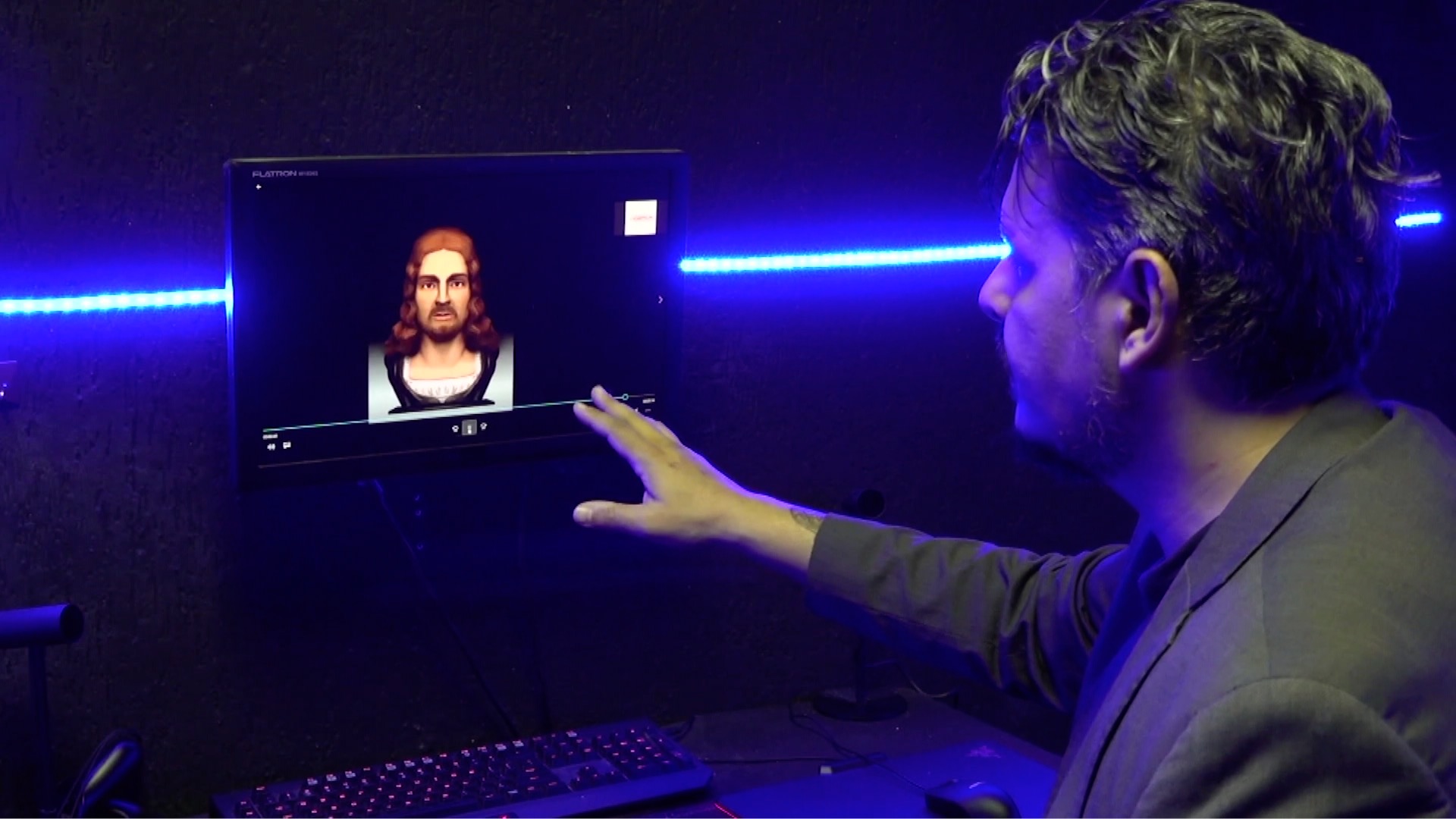01:18

The face of the Renaissance painter Raphael has been digitally recreated in 3D by a team of scientists and computer game experts.
The image is based on a skull that's believed to have belonged to the artist. Its likeness to portraits suggests there can be no doubt the remains are genuinely those of the famed painter.
Raphael was born in Urbino, Italy in 1483 and died at the age of 37 in Rome.
In his short life, Raphael created some of the most outstanding works of art during the Renaissance, including "The School of Athens.”
His tomb at Rome's Pantheon is still a draw for visitors who wish to pay their respects.
Experts at Rome's Tor Vergata University created the 3D reconstruction by using a plaster cast of his skull that was made after his body was exhumed in 1833. They then compared it with portraits of the artist that were painted by his contemporaries, as well as self-portraits, and concluded that there was a clear match.

The comparison between Raphael's self-portrait and 3D model. /Tor Vergata University
The comparison between Raphael's self-portrait and 3D model. /Tor Vergata University
A team of people working in 3D techniques, along with the molecular biology department at Rome's Tor Vergata University, based their work on the cast of that skull.
"The technique of 3D facial reconstruction is a consolidated scientific technique, easily reproduced, used often in both legal and scientific research, but also in historic research, for example the likenesses of Petrarch and Robespierre were taken from casts," explains Mattia Falconi, professor of molecular biology at Tor Vergata University.
"This technique allows us to identify the face of the individual to a precision of 85 percent. This means that anyone living in Raphael's time, who knew him, would have recognized him from this reconstruction."
Molecular biologists and forensic anthropologists were joined on the project by experts from Rome's video game museum, VIGAMUS.
Their skills in creating 3D, lifelike figures helped slowly build Raphael's face, painstakingly adding components to the digital image.
"It was a very gradual process, since from the moment we passed from the anatomical landmarks to the physiognomic reconstruction and to the addition of tissues and facial muscle, the face of Raphael emerged," explains Raoul Carbone, president of VIGAMUS and professor of 3D techniques applied to legal anthropology.
This September, a 3D model of the head will be printed and given to the House of Raphael in the painter's hometown of Urbino.
It will be placed alongside a plaster cast for visitors to compare.
The project comes during the 500th anniversary of Raphael's death.
(With input from AP)